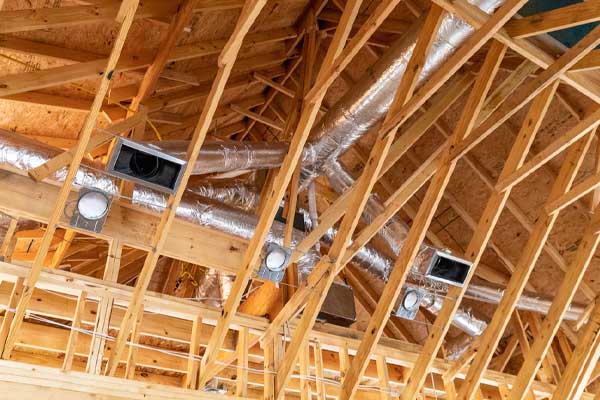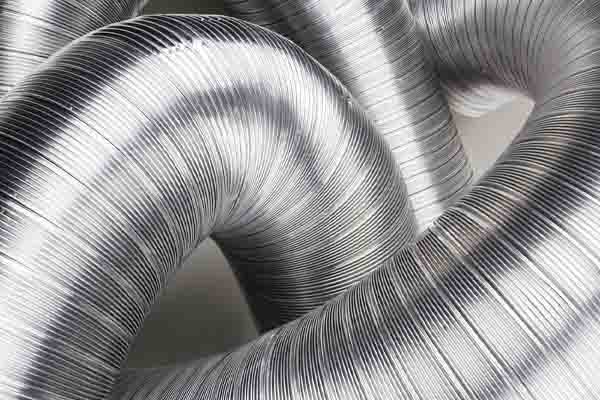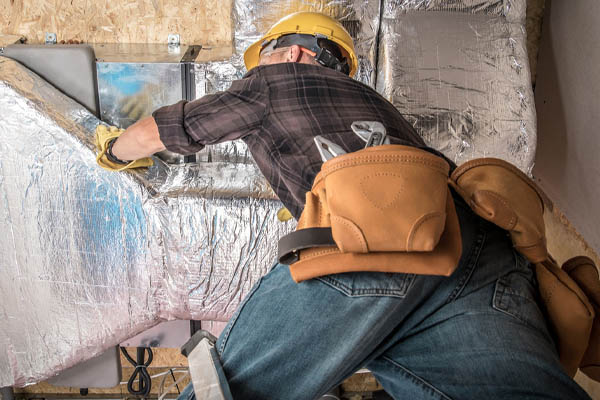Designing Comfort: The Art & Science of HVAC Ductwork

Delve into the world of HVAC ductwork, a vital component for distributing conditioned air efficiently in homes and buildings. It plays a pivotal role in ensuring even air distribution and stable temperatures, contributing to an environment that is both comfortable and energy-efficient. This article provides insights into why good HVAC ductwork design is key to maximizing HVAC efficiency.
Comprehending Ductwork Design
Contents
- 1 Comprehending Ductwork Design
- 1.1 Energy Efficiency & Cost Savings in HVAC Ductwork
- 1.2 Proper HVAC Airflow & Comfort
- 1.3 Noise Reduction & HVAC Performance
- 1.4 Handling Frequent Heating & Cooling Ductwork Problems
- 1.5 Effective Ways to Optimize Heating & AC Ductwork
- 1.6 Critical Points for New HVAC Ductwork Installations & Upgrades
- 1.7 Conclusion
- 2 Contact Lawes Company for Your HVAC Needs

The process of ductwork design entails the strategic development of a network of channels that facilitate the movement of warmed or chilled air across the building. This involves meticulous decisions about the arrangement, dimensions, and choice of materials for the ducts.
Correct sizing and layout of ductwork are critical for efficient air distribution. Improper sizing can cause inadequate airflow or energy wastage, while an optimal layout ensures even temperature control and minimizes pressure losses, enhancing system performance.
The choice of ductwork materials significantly influences its efficiency. Among the various materials available, the following are most frequently used:
- Flexible Ducts: Known for their versatility and ease of installation, flexible ducts are a popular choice. However, they have a tendency for air leakage.
- Sheet Metal Ducts: Renowned for their durability and resistance to leaks, sheet metal ducts are highly effective. They necessitate precise design and thorough sealing to maximize efficiency.
Selecting the appropriate material is key to achieving a harmonious blend of efficiency, durability, and cost-effectiveness in HVAC systems.
Energy Efficiency & Cost Savings in HVAC Ductwork
The design of ductwork is pivotal for attaining energy efficiency. Ducts that are designed effectively aid in preserving balanced airflow, reducing energy loss from leaks or poor insulation.
Efficiently designed ducts contribute to lower utility bills by ensuring that conditioned air is delivered effectively to its intended areas. This optimization in energy usage also helps decrease overall operational expenses.
When ductwork is adequately sealed and insulated, it leads to several benefits:
- Effective prevention of air leakage
- Heat transfer reduction
- Enhanced energy efficiency
- Consistent indoor temperatures
- Improved HVAC system performance
- Increase in indoor comfort levels
- Greater savings
Proper HVAC Airflow & Comfort
Efficient ductwork design is crucial in evenly distributing conditioned air throughout a building, ensuring consistent temperature control and eliminating hot and cold spots for uniform comfort. This not only prevents HVAC system overexertion but also enhances indoor air quality by efficiently filtering and circulating air, reducing dust and contaminants, and significantly improving occupant comfort and well-being.
Noise Reduction & HVAC Performance
The design of the ductwork significantly impacts the noise levels of the HVAC system, playing a crucial role in the overall comfort and serenity of indoor environments.
- Airflow and Noise Issues: Poorly designed ducts with abrupt turns or incorrect sizing cause restricted airflow and turbulence, leading to higher noise levels. Smooth, well-sized ducts with gradual curves reduce these disturbances.
- Noise Transmission: Uninsulated or unsealed ducts let HVAC system noise into occupied spaces. Proper insulation and sealing are essential to reduce vibrations and noise transmission.
- Duct Material and Thickness: The material and thickness of ducts affect noise levels. Sheet metal lacks sound absorption, whereas thicker-walled ducts provide better noise insulation.
- Duct Placement and Proximity: Strategic placement of ducts minimizes noise in quiet areas like bedrooms and offices. Distance between HVAC units and occupied spaces also helps in noise reduction.
- Acoustic Design in Ductwork: Designing ductwork with acoustic enhancements, such as sound-absorbing materials or noise-reducing elements like silencers and baffles, effectively lowers noise levels.
Reducing noise in an HVAC system goes beyond just creating a quieter environment; it’s also about improving efficiency and functionality. High noise levels can cause discomfort, stress, and potentially health problems for those in the vicinity. A system that operates quietly is often a sign of its proper functioning and optimal performance.
The design of ductwork significantly influences the efficiency of HVAC equipment. If the ducts are poorly designed, they can restrict airflow, forcing the system to exert more effort to achieve the desired temperatures. This scenario leads to higher energy use, diminished efficiency, and extra strain on the system’s components.
Handling Frequent Heating & Cooling Ductwork Problems
Key ductwork issues like leaks, inadequate insulation, and incorrect sizing can substantially affect HVAC system performance. Leaks can result in energy loss, lowered efficiency, and uneven temperatures. Insufficient insulation may lead to unwanted heat loss or gain, reducing indoor comfort. Ducts that are not properly sized can cause poor airflow and put extra pressure on the HVAC system.
Effective Ways to Optimize Heating & AC Ductwork
- Seal all ducts to prevent air leaks.
- Enhance ducts with additional insulation.
- Adjust duct sizing to suit the system’s requirements.
- Design ducts with gradual bends and smooth transitions and ensure even air distribution.
Regular professional inspections and repairs of ductwork are crucial. HVAC experts are adept at uncovering underlying issues, evaluating the system’s performance, and suggesting suitable remedies. Consistent maintenance and prompt repairs keep the ductwork functioning efficiently and reliably, extending the lifespan and enhancing the performance of the HVAC system.
Critical Points for New HVAC Ductwork Installations & Upgrades

For new constructions, ductwork design is a critical component, relying on the building’s layout, room sizes, and HVAC load. Proper duct sizing, layout planning, and material selection are key to achieving balanced airflow and effective temperature control.
In upgrading existing duct systems, evaluating current performance and identifying improvement areas is essential. This may include resizing ducts, enhancing insulation, or sealing leaks to improve efficiency and comfort.
Collaboration with HVAC experts is essential for the best ductwork design. These professionals assess the specific needs, calculate load requirements, and recommend tailored design changes or upgrades. Their expertise ensures that both new installations and enhancements align with energy efficiency standards and optimize HVAC performance.
Conclusion
This discussion highlights the critical role of well-designed ductwork in aspects ranging from energy efficiency to indoor comfort, noise reduction, and the longevity of the HVAC system. Carefully considering layout, appropriate sizing, and material selection is key to establishing a balanced indoor environment. Emphasizing professional ductwork design ensures homeowners benefit from HVAC systems operating at peak performance, enhancing comfort, efficiency, and the overall well-being of the occupants and the environment.
Contact Lawes Company for Your HVAC Needs
Lawes Company is the premier provider of HVAC solutions in the Jersey Shore area. Our team comprises professionally certified technicians specializing in HVAC maintenance, repairs, installations, and replacements. We are committed to delivering exceptional services to every client.
Lawes Company recognizes the significance of an energy-efficient and comfortable home. That’s why we provide competitively priced services. Our tune-up services are designed to enhance your comfort while reducing energy costs. Whether you need an HVAC repair or a complete system replacement, our expert technicians will recommend the most suitable and budget-friendly options. We back our work with a satisfaction guarantee. Call us to arrange a service appointment. We offer complimentary in-home estimates.
Contact us now at (732) 741-6300 to find out more! Click the link to view our service area.

Related Articles: